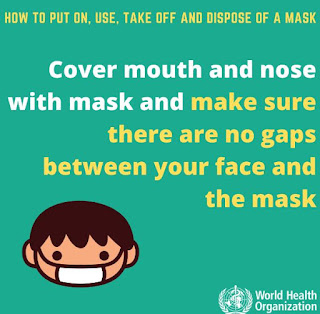How
do COVID-19 tests work?
There are two types of tests carried out. In the U.S,
they use long Q-tip to swab the back of your throat. In developed countries
such as china, an antibody test may be carried out from the blood sample. The
throat swab is well suited for Polymerase Chain Reaction (PCR).
PCR test works by detecting specific genetic material
within the virus. From the sample, nucleic acid will be extracted, which holds
the viral genome. Amplification of certain regions of the genome will be done
by a reverse transcription-polymerase chain reaction. A large sample be obtained that is compared to
SARS-Cov2. It has 30,000 nucleotides.
PCR targets approximately 100
nucleotides that are specific to SARS-Cov2. These 100 nucleotides include 2
genes in the SARS-Cov2 genome.
A sample is positive if it has both the genes, whereas if both the genes are absent, they are COVID-19 negative. In Contrast, serological tests look for specific
antibodies. If they detect particular antibodies, it is positive. This test has
an advantage that it can detect antibodies even the patient gets recovered.
How
Vietnam tackled COVID-19?
Vietnam is a densely populated neighbor country of China. It has a low budget
for the treatment of coronavirus. In addition to that is has a weak health care
system. But somehow they managed to keep the infection rate very low. Vietnam
shares 897 miles border with china. But they had 207 cases since the break and
no fatalities. During Tet new year, the Vietnam government declared war on the
coronavirus. Vietnam does have the capability to fight the outbreak like
south Korea.
Ho Chi Minh city’s hospitals have a total of 900
intensive care beds. Based on available resources, Vietnam applied strict quarantine
policies. They also tracked different levels of contact with infected
persons. These were implemented at an earlier stage. Since the beginning of February,
Schools and Universities were closed. Around 3000 businesses have closed in the
first two months of 2020.
Does
masks really protect form COVID-19?
Types of masks and respirators
Face mask (
Cloth or paper masks)
|
Surgical mask
|
N95 respirator
|
||
Purpose
|
Prevents
large particles expelled by the wearer
from reaching the environment.
|
To
be used as a physical barrier to protect from large droplets of blood or body
fluids,
|
Reduces
exposure to very small airborne particles or contaminants.
May
not protect against sprays and direct liquid splashes.
|
To
be used as a physical barrier from large droplets of blood or body fluids as
well as small particles
|
Filtration
efficiency
|
Not applicable
|
Bacterial
filtration efficiency above 95%
|
Minimum
95% against particulate
aerosols
|
Minimum 95% against
particulate aerosols
|
Fluid resistance
|
Absent
|
Yes
|
Not
applicable
|
yes
|
Coronavirus:
How do ventilators work?
Since COVID-19 mainly
affects the lower respiratory tract. Then the illness quickly becomes critical,
and the most severe cases must be immediately connected to a ventilator in the
intensive care unit.
Artificial respiration can save lives because if
breathing stops, the organs are no longer supplied with oxygen. At the same
time, the carbon dioxide produced during breathing is no longer exhaled via the
lungs. But there is a
worldwide lack of equipment.








No comments:
Post a Comment